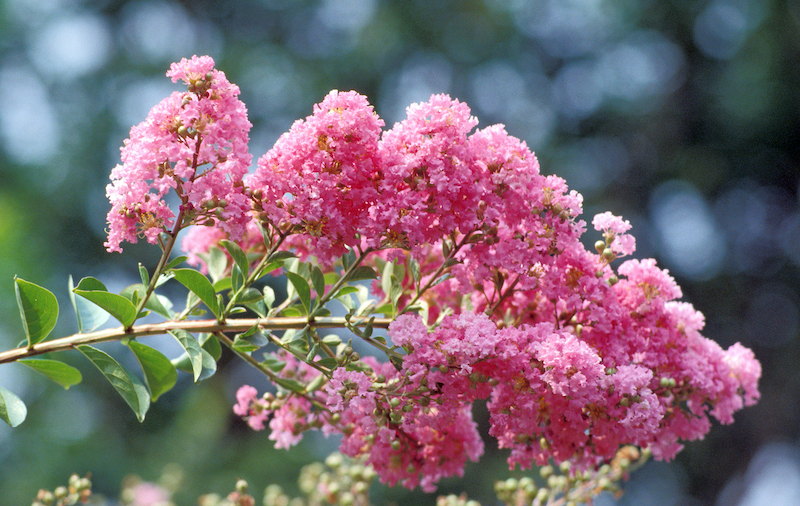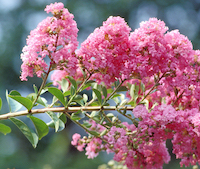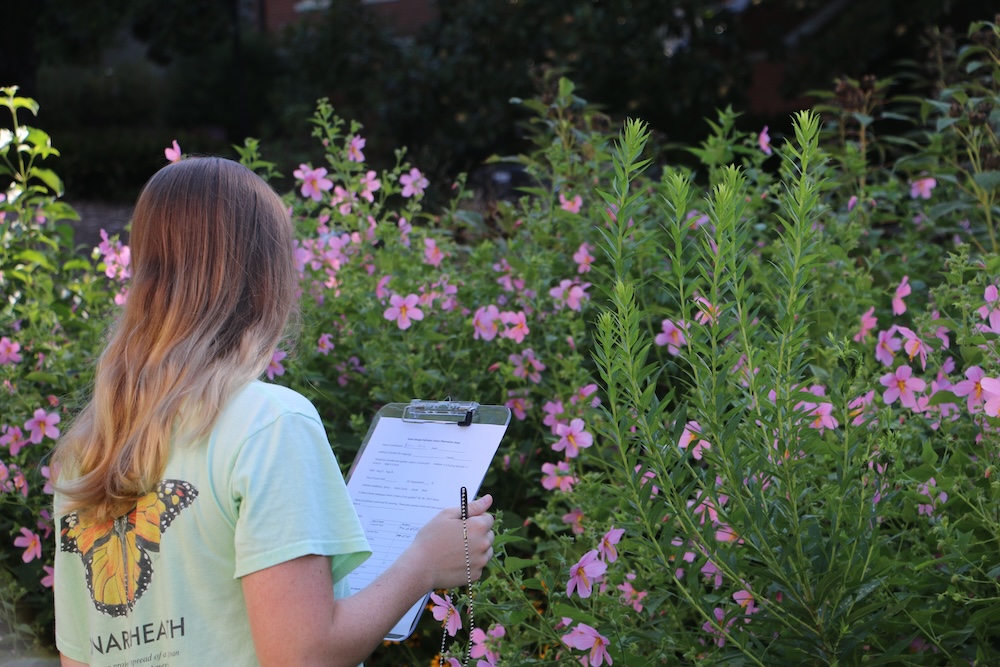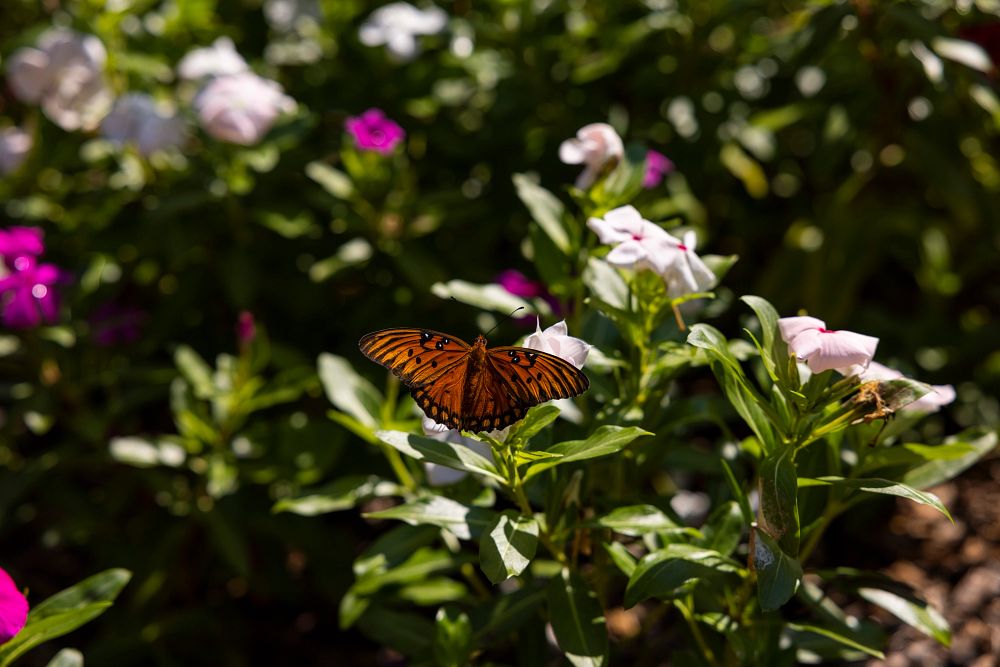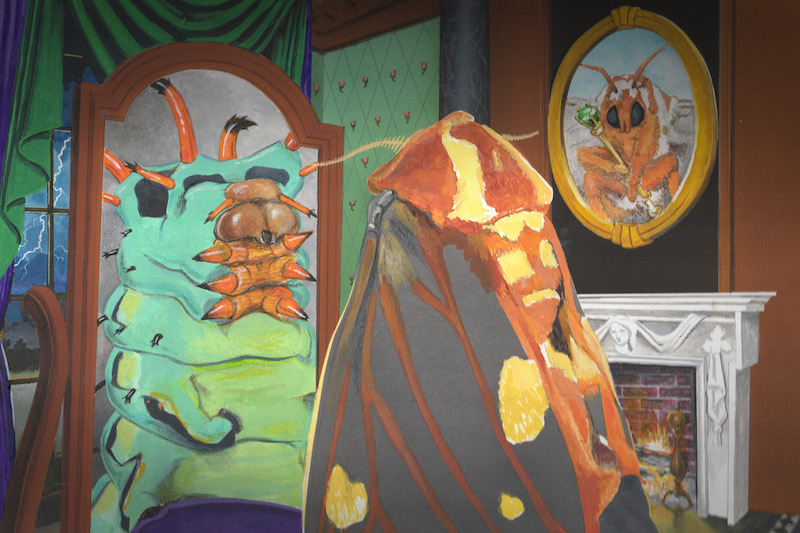Crape myrtles are true treasures in Georgia. They bloom all summer, their peeling bark is attractive, their fall color is stunning and they are tough enough to thrive almost anywhere they can get enough sun. And, they come in sizes to fit almost any spot in the landscape.
These woody perennials return year after year and provide abundant color with a minimum amount of maintenance. Crape myrtles are so well suited because they are long-lived and withstand drought after becoming established.
Green groundcover adds contrast
The crape myrtle can be planted alone or in groups, and it looks attractive with groundcover planted around it. Dark green groundcover contrasts well with the handsome bark of the tree.
It adapts well to confined spaces and is well suited for small areas close to sidewalks or parking lots. They can provide shade in deck and patio areas. The plant typically develops several main stems. The multi-trunk crape myrtles are more desirable than single stem plants in landscape plantings.
The crape myrtle is valued mainly for its long period of striking summer flowers. These showy flowers come in shades of white, pink, red or lavender. Bloom time varies depending on the variety. Large clusters appear on the tips of new branches beginning in early summer and continue into fall.
Prune anytime
Crape myrtle flowers on new growth of the season. So, plants can be pruned anytime during the late winter or early spring before the new growth emerges without losing flower buds.
Avoid pruning in the fall before the first frost because this forces new growth and keeps the plant from going dormant. The type and amount of pruning to be done each year depends entirely on the ultimate size and shape of plant you want.
On some earlier-blooming cultivars, pruning to remove spent flowers will stimulate new growth and another flush of bloom in late summer. On cultivars that bloom after mid-July, it is sometimes difficult to force a second bloom.
The attractive, exfoliating bark peels away to expose a trunk that ranges in color from handsome shades of brown to gray. This bark is especially noticeable in the winter months when the tree is leafless.
Fall leaf color ranges from yellow to orange and red. Although the same plant may display leaves of several colors, the white-flowered types often have yellow fall color. The pink- and red-flowered types show yellow, orange and red leaf color in the fall.
Prune spent flowers off if your crape myrtle blooms early enough to allow time for another flush of color. By doing this, you can extend the color in your landscape for a much longer period.

